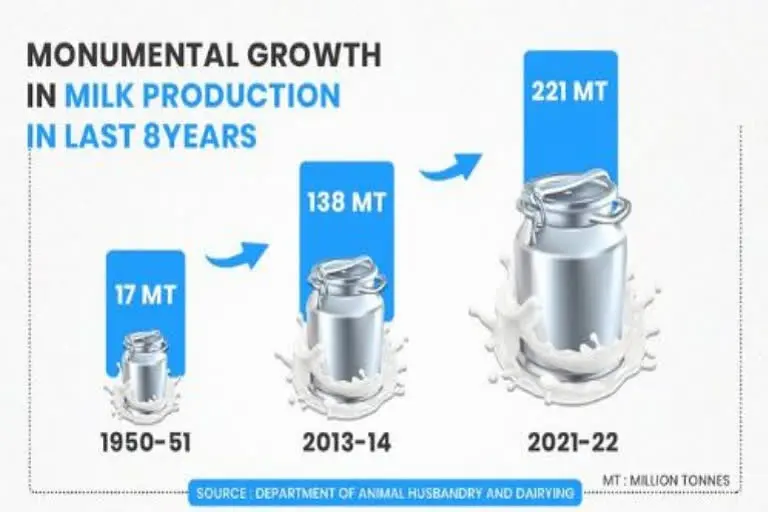India’s milk production has registered a monumental growth in the last eight years as it has increased by 83 Million Tonnes. In 2013-14, the production was 138 Million Tonnes which increased to 221 Million Tonnes in 2021-22.
What has been said
Prime Minister Narendra Modi has said, a vibrant dairy sector is also a great way to further strengthen Nari Shakti.
Union Minister for Fisheries, Animal Husbandry, and Dairying, Parshottam Rupala has credited it to the government’s initiatives for a paradigm shift in the policy perspective of the Dairy and Animal Husbandry sector in the last eight years.
He added a huge budgetary allocation has also been made for this sector which was mostly ignored earlier. The Minister also said that the Centre has expanded the vaccination program for Foot and Mouth Disease to pan India. He added that it was launched as an eradication programme which was earlier a disease control program limited to selected states and districts.
Evolution of the Dairy Sector in India
India is the largest producer of milk in the world, contributing 23% of global milk production.
During the 1950s and 1960s, the situation was radically different. India was a milk-deficit nation dependent on imports, and the annual production growth was negative for several years.
The annual compound growth rate in milk production during the first decade after independence was 1.64%, which declined to 1.15% during the 1960s. In 1950-51, per capita consumption of milk in the country was only 124 grams per day. By 1970, this figure had dropped to 107 grams per day, one of the lowest in the world and well below the minimum recommended nutritional standards. India’s dairy industry was struggling to survive. The country produced less than 21 million tonnes of milk per annum despite having the largest cattle population in the world.
In 1964, the National Dairy Development Board (NDDB) was created in 1965 with a mandate to support the creation of the ‘Anand Pattern’ of dairy cooperatives across the country through the Operation Flood (OF) programme which was to be implemented in phases.
Dr. Verghese Kurien, widely renowned as the “Father of White Revolution” in India, was the first chairman of NDDB. Along with his team, Dr. Kurien commenced work on the launch of the project, which envisaged the organisation of Anand-pattern cooperatives in milk sheds across the country from where liquid milk produced and procured by milk cooperatives would be transported to cities.
Per Capita Availability
The per capita availability of milk in India is much higher than the world average. In three decades (the 1980s, 1990s and 2000s), the daily milk consumption in the country rose from a low of 107 grams per person in 1970 to 427 grams per person in 2020-21 as against the world average of 322 grams per day during 2021.





